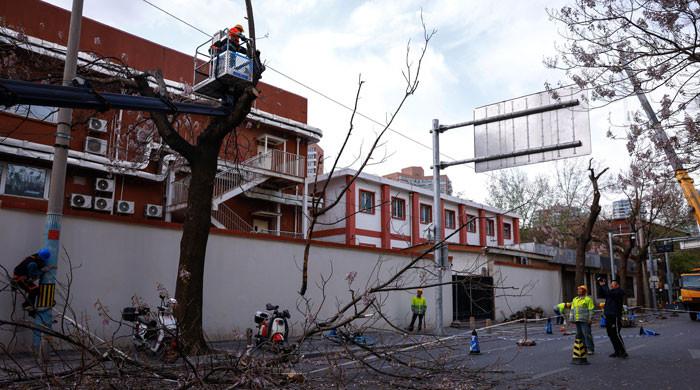China’s capital was bracing for impact on Saturday as unusually strong, typhoon-like winds swept through its northern regions. This weather event led to the closure of historical landmarks and caused widespread travel disruptions, alongside unexpected late snowfalls and showers of hailstones in certain locales.
Gusts of wind, triggered by a cold vortex originating from neighboring Mongolia, shook windows and toppled trees onto sidewalks and vehicles, sending temperatures plummeting.
The strong winds commenced on Friday and are expected to persist throughout the weekend, potentially reaching speeds of up to 150 kph (90 mph). These winds have also brought late-season snow to Inner Mongolia and hailstorms to areas in southern China.
Authorities in Beijing issued a high-level gale alert for the first time in ten years, advising the city’s 22 million residents to avoid unnecessary travel. The warning indicated that wind speeds could surpass April records dating back to 1951.
Despite the warnings, some residents shared that while they felt apprehensive, they were still able to move about the city.
One local resident, a 30-year-old surnamed Li, commented that the situation was not as dire as anticipated, but it was still having some impact on daily routines.
By 2pm (0600 GMT), the strong winds had uprooted 703 trees in Beijing. Additionally, 693 flights were grounded at the city’s two primary international airports, Beijing Capital and Beijing Daxing.
The severe weather conditions dominated discussions on social media, with many users expressing concern for delivery workers who were out in the elements.
One user on Weibo remarked that people have the option to not order delivery under such harsh conditions, acknowledging the difficulty faced by delivery personnel.
The strong winds also caused the postponement of a half-marathon scheduled for Sunday. This event was set to feature humanoid robots competing against humans, intended to highlight China’s technological advancements.
Sandstorms, stretching from Inner Mongolia to the Yangtze River region, severely hampered road travel across eight provinces. It was anticipated that Shanghai would experience the effects of these sandstorms from Saturday afternoon through Sunday morning.
While strong winds carrying sand and dust from Mongolia are typical during the spring season, climate change has been contributing to more extreme weather occurrences.



Comments (0)
No comments yet. Be the first to comment!
Leave a Comment